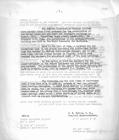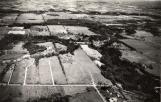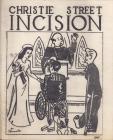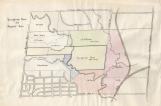1
It was during the latter part of 1942 that the need for a new hospital to serve the Toronto district first became apparent. People who had taken an interest in the patients at the old Christie Street Hospital were among those who foresaw that once heavy fighting started in Europe, the flow of casualties to Canadian hospitals would increase, The group of Toronto citizens actively interested included men and women.In Ottawa at that time as Minister of the old Department of Pensions and National Health, was a man of broad humanity and understanding, the Right Honourable Ian A. Mackenzie. He and officials of the Department had also been giving serious consideration to hospital needs for the Toronto district. When representations were made by Toronto citizens, they found Department officials fully seized of the need for the hospital and with considerable planning already under way.
A site was one of the problems, for modern hospitalization demands large areas. It was felt that the hospital would more truly meet treatment needs if it were located amid rural surroundings.
In order to help in the location and selection of a suitable site and to have representatives on the ground who might expedite building and the securing of labour and materials, which during wartime were in very short supply, it was decided to appoint a committee of Toronto business men. This committee was headd by the Honourable W.J. Stewart, C.B.E., then Speaker of the Ontario Legislature, was formed and for over five years has operated as the Greater Toronto Veterans Hospital Committee.
One of their first tasks was to find a site for the hospital. They knew of such a site which had been willed to the City of Toronto for park purpose by the late Robert Kilgour, a prominent Toronto industrialist. Their first approach was to the civic authorities to learn, if the trustees of the Kilgour Estate were agreeable, whether the city would be prepared to make it available. Not only was the City of Toronto prepared to make the site available but it was also prepared to provide it was a gift.
The heirs of the late Robert Kilgour were equally agreeable and in early 1943 it was announced that the Dominion government would erect a new and ultra-modern hospital to replace the Christie Street insitution, on the site provided by the city. The first sod was turned on November 11, 1943 and following this, Messrs. Alward and Gouinlock, two prominent architects, were retained and definite plans for the new hospitalbegan to take shape. Closely associated with the architects during this period, were Mr. A. J. Swanson and Mr. Chester Decker, both expert, highly experienced hospital administrators. Their advice and assistance have proved of inestimable value to the Department of Veterans Affairs throughout the complete project.
During the summer of 1944, preliminary grading of the site was carried out and the Redfern Construction Company Limited was awarded the contract for erection of the Boiler House and two treatment buildings. Operations began almost immediately and on November 11th of that year, the Right Honourable Ian A. Mackenzie officially laid the cornerstone of the Neuropsychiatric Building. Construction followed speedily and just a year later, Corporal F. G. Topham, V.C., laid the coernerstone of the huge Active-Treatment building.
Four months prior to this ceremony, Karl E. Hollis, M.D., C.M., widely known in Canadian medical and military circles, was appointed hospital superintendent. Much of the credit for Sunnybrook as it is today is due to his constand and unflagging efforts on behalf of the institution.
Since his apointment as District Administrator of teh Department of Veterans Affairs in Toront in May 1945, Mr. H. W. DeGuerre has played a dominant role in the development of the hospital. At all times, he and Dr. A. C. Norwich, Chief Medical Officer for the district, have worked closely with those directly concerned in the planning and consturction of the institution.
3
Toronto Military Orthopaedic Hospital (Christie Street Veterans Hospital)Circa 1940
Toronto, Ontario, Canada
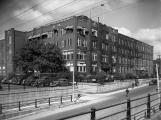
5
Christie Street Incision - Life At ChristieCirca 1941
Toronto, Ontario, Canada
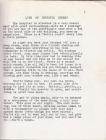 Credits:
Credits:B. Ryding, 3rd West
6
Letter Written by Dr. Hollis Regarding the Formation of Sunnybrook8 May 1948
Toronto, Ontario, Canada
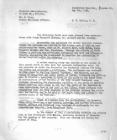 Credits:
Credits:K. E. Hollis, M.D.
7
Letter Written by Dr. Hollis Regarding the Formation of Sunnybrook, Page 28 May 1948
Toronto, Ontario, Canada
